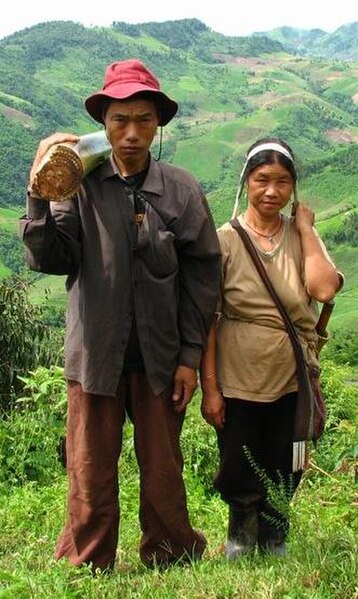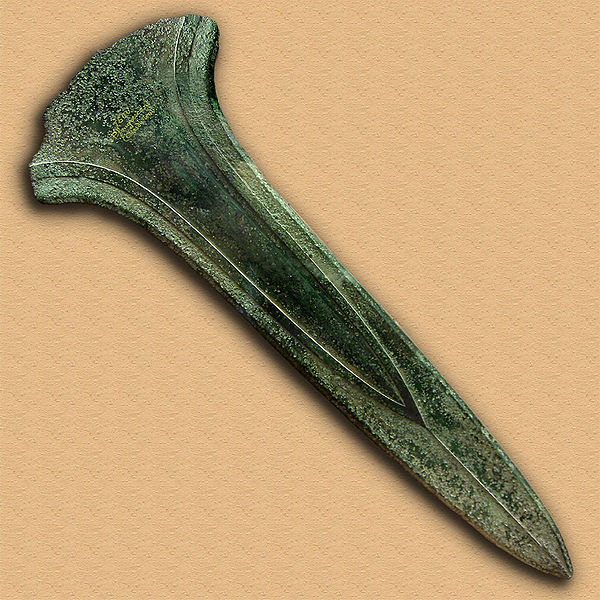The history of technology is the history of the invention of tools and techniques by humans. Technology includes methods ranging from as simple as stone tools to the complex genetic engineering and information technology that has emerged since the 1980s. The term technology comes from the Greek word techne, meaning art and craft, and the word logos, meaning word and speech. It was first used to describe applied arts, but it is now used to describe advancements and changes that affect the environment around us.
The wheel, invented sometime before the 4th millennium BC, is one of the most ubiquitous and important technologies. This detail of the "Standard of Ur", c. 2500 BCE., displays a Sumerian chariot.
Agriculture preceded writing in the history of technology.
A variety of stone tools
A late Bronze Age sword or dagger blade
Humans or modern humans are the most common and widespread species of primate, and the last surviving species of the genus Homo. They are great apes characterized by their hairlessness, bipedalism, and high intelligence. Humans have large brains, enabling more advanced cognitive skills that enable them to thrive and adapt in varied environments, develop highly complex tools, and form complex social structures and civilizations. Humans are highly social, with individual humans tending to belong to a multi-layered network of cooperating, distinct, or even competing social groups – from families and peer groups to corporations and political states. As such, social interactions between humans have established a wide variety of values, social norms, languages, and traditions, each of which bolsters human society. Humans are also highly curious: the desire to understand and influence phenomena has motivated humanity's development of science, technology, philosophy, mythology, religion, and other frameworks of knowledge; humans also study themselves through such domains as anthropology, social science, history, psychology, and medicine. As of May 2024, there are estimated to be more than 8 billion humans alive.

Human
Choropleth showing Population density (people per square kilometer) estimates by 30 arc-second grid in 2020
Reconstruction of Lucy, the first Australopithecus afarensis skeleton found
Great Pyramids of Giza, Egypt








